
Ergine, also known as d-lysergic acid amide (LSA) and d-lysergamide, is an ergoline alkaloid that occurs in various species of vines of the Convolvulaceae and some species of fungi. The psychedelic properties in the seeds of ololiuhqui, Hawaiian baby woodrose and morning glories have been linked to ergine and/or isoergine, its epimer, as it is an alkaloid present in the seeds.

Stipa is a genus of around 300 large perennial hermaphroditic grasses collectively known as feather grass, needle grass, and spear grass. They are placed in the subfamily Pooideae and the tribe Stipeae, which also contains many species formerly assigned to Stipa, which have since been reclassified into new genera.

Eriocoma hymenoides is a cool-season, perennial bunchgrass. It is native to western North America.
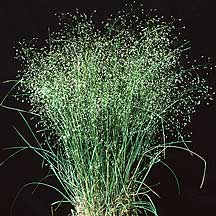
Oryzopsis is a genus of Chinese and North American plants in the grass family. Species from this genus are commonly called ricegrass.

Nassella pulchra, basionym Stipa pulchra, is a species of grass known by the common names purple needlegrass and purple tussockgrass. It is native to the U.S. state of California, where it occurs throughout the coastal hills, valleys, and mountain ranges, as well as the Sacramento Valley and parts of the Sierra Nevada foothills, and Baja California.

Achnatherum is a genus of plants which includes several species of needlegrass. Several needlegrass species have been switched between Achnatherum and genus Stipa; taxonomy between the two closely related genera is still uncertain.
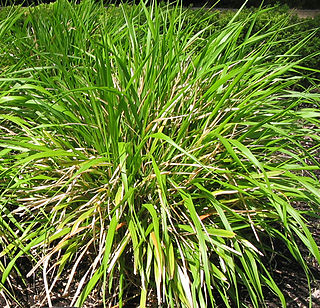
Piptatherum is a genus of plants in the grass family known as ricegrass.

Eriocoma coronata, formerly classified as Achnatherum coronatum, is a greenish species of grass known by the common name crested needlegrass, giant ricegrass, and giant stipa.
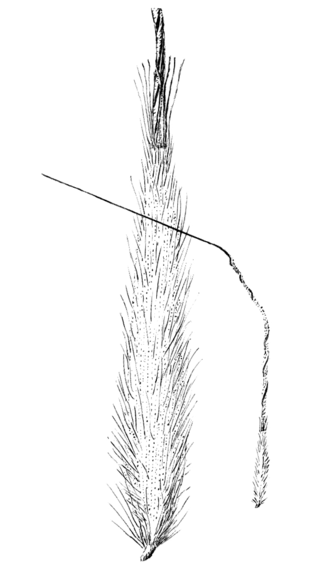
Achnatherum diegoense is a species of grass known by the common name San Diego needlegrass. It is native to southern California, where it is known from San Diego and Ventura Counties and the Channel Islands, and Baja California.

Eriocoma latiglumis is a species of grass known by the common names wide-glumed needlegrass and Sierra needlegrass.

Eriocoma lettermanii is a species of grass known by the common name Letterman's needlegrass. It is native to the western United States from California and Oregon to Montana and New Mexico, where it is a resident of several types of habitat.

Eriocoma parishii is a species of grass known by the common name Parish's needlegrass.

Eriocoma pinetorum is a species of grass known by the common names pinewoods needlegrass and pine needlegrass. It is native to most of the western United States from California to Montana to New Mexico, where it grows in woodland and forest in rocky mountainous areas.
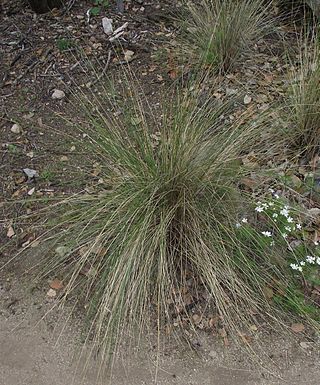
Stipa speciosa (syn. Achnatherum speciosum is a species of grass known by the common name desert needlegrass. It is native to much of the south-western United States from California to Colorado, where it grows in dry areas, especially sagebrush habitat. It is also known from Mexico and parts of South America.
A. robustum may refer to:

Achnatherum calamagrostis is a species of flowering plant in the grass family Poaceae, known by the common names spear grass, needle grass, and silver spike grass. It is an ornamental grass native to the clearings in the mountains of central and southern Europe, which grows in mounds of blue-green leaves and long, silvery plumes.
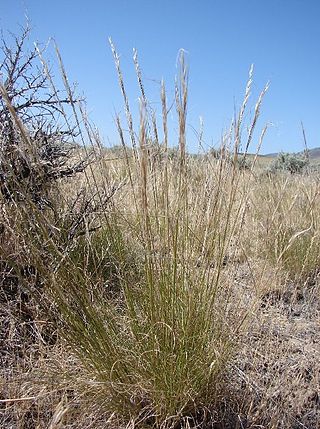
Eriocoma thurberiana is a species of grass known by the common name Thurber's needlegrass. It is native to the western United States, where it occurs from Washington to California and east to Montana and Wyoming.

Eriocoma lemmonii is a species of grass known by the common name Lemmon's needlegrass. It is native to western North America, where its distribution extends from British Columbia to southern California.
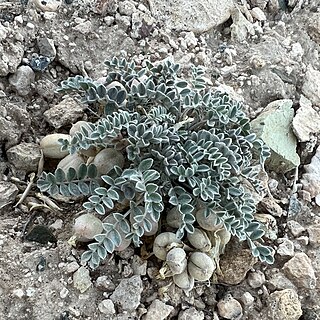
Astragalus anisus is a species of flowering plant in the legume family known by the common name Gunnison milkvetch. It is endemic to Colorado in the United States, where it is limited to the Gunnison Basin of Gunnison and Saguache Counties.


















